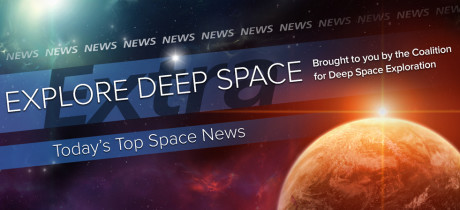In Today’s Deep Space Extra… U.S. Senate hearing focuses on challenges and enthusiasm for the human exploration of Mars as well as a return to the moon. Northrop Grumman, NASA confer on a plan to suspend contract profits until the technically challenging James Webb Space Telescope (JWST) has launched and demonstrated its observational capabilities.
Policy
Senators insist Mars, not the Moon, is the goal of U.S. human exploration
Spacepolicyonline.com (7/26): The U.S. Senate Space Committee met earlier this week for a hearing on NASA’s deep space exploration plans, especially the agency’s enthusiasm for reaching Mars with astronauts. Experts offered testimony explaining why humans offer the best prospect for assessing whether the red planet was and possibly still host’s habitable environments.
Senate bill puts DOT in charge of non-traditional space regulations, extends ISS to 2030
Spacepolicyonline.com (7/27): The Space Frontier Act, legislation introduced by a bi-partisan trio of U.S. senators from Texas, Florida and Maryland, would extend NASA operations of the International Space Station to 2030, five years longer than called for in President Trump’s 2019 budget proposal now making its way through Congress. The measure would also place the Department of Transportation, rather than Commerce, in charge of non-government space activities not already regulated under federal law. Some of those new activities include asteroid mining and satellite servicing. The fate of the legislation, which differs from a House version, is unclear.
National Space Council to develop a microgravity strategy
SpaceNews.com (7/26): The White House National Space Council plans an informed look at what kind of strategy it can pursue to support national and commercial access to low Earth orbit assets, including the International Space Station and its workforce, according to Jared Stout, the council’s chief of staff. Stout cautioned the nation must not do what it did seven years ago, when NASA’s shuttle fleet was retired without a replacement. The White House is calling on NASA to end direct funding of the space station by 2025 in order to transition the agency’s human exploration focus to the moon and other deep space destinations.
Human Exploration
Orion spacecraft symbol for American leadership in space
Coalition Member in the News – Lockheed Martin
Politico (7/27): Orion is the spaceship that will carry astronauts to the Moon and Mars, but it’s also so much more than that. It’s a model of how America will lead on the world stage, and how NASA will power humanity’s next giant leap – a future where we will live and work in deep space and build a new and thriving commercial economy in orbit and beyond.
One woman’s math could help NASA put people on Mars
Bloomberg Business Week (7/26): As a member of Purdue University’s faculty, Kathleen Howell has turned her passion and expertise for orbital mechanics into an address for the human tended Lunar Orbital Platform-Gateway (LOP-G) NASA plans to assemble as part of a U.S. return to the Moon with astronauts in the next decade. The Earth Moon Lagrange point 2 appears to be just the place for spot in a Near Rectilinear Halo Orbit that offers the orbital station a view of the Moon’s far side and continuous communications with the Earth.
Space Science
Northrop CEO offers to link JWST profit to mission success
Coalition Member in the News – Northrop Grumman
SpaceNews.com (7/26): Faced with recent launch schedule delays and cost increases during the late stage development of the James Webb Space Telescope (JWST), prime contractor Northrop Grumman intends to put its award fees, or profits, aside until the technically complex observatory is launched and demonstrates its capabilities, company CEO Wesley Bush told the U.S. House Science, Space and Technology Committee on Thursday. The launch has been reset from October 2018 to March 2021. An independent review board concluded the estimated development cost will eclipse a congressional cost cap of $8 billion.
Was there a time when the Moon was habitable?
Universe Today (7/26): Now absent an atmosphere, the moon seems decidedly lifeless. But U.S. and U.K. scientists suggest there may have been lunar environmental conditions favorable to biological activity at two points in the distant past, 4 billion years ago as the moon formed and 3 1/2 billion years ago, when the Moon’s volcanic activity peaked.
Other News
SpaceShipTwo hit nearly Mach 2.5 in successful flight test
Parabolic Arc (7/26): Virgin Galactic’s suborbital SpaceShipTwo, VSS Unity, achieved Mach 2 and an altitude of 170,800 feet early Thursday over Mohave, California. “It was a thrill from start to finish,” said pilot Dave McKay, who was joined by copilot Mike Masucci, after their safe landing. The test launch was to help qualify the spacecraft for commercial suborbital passenger flight.

